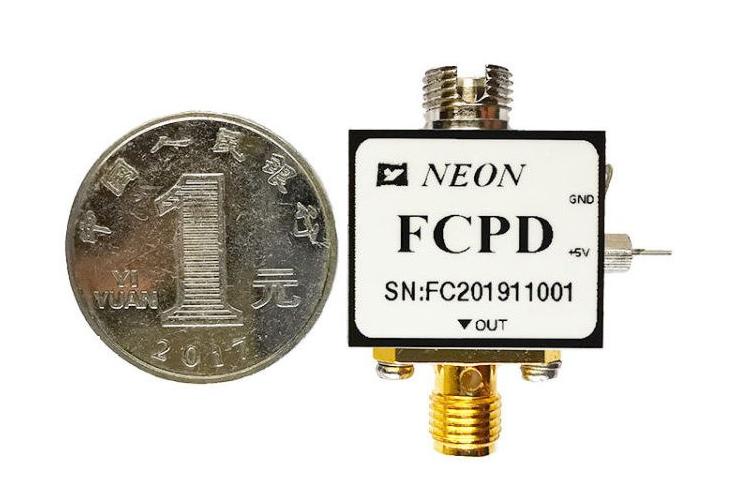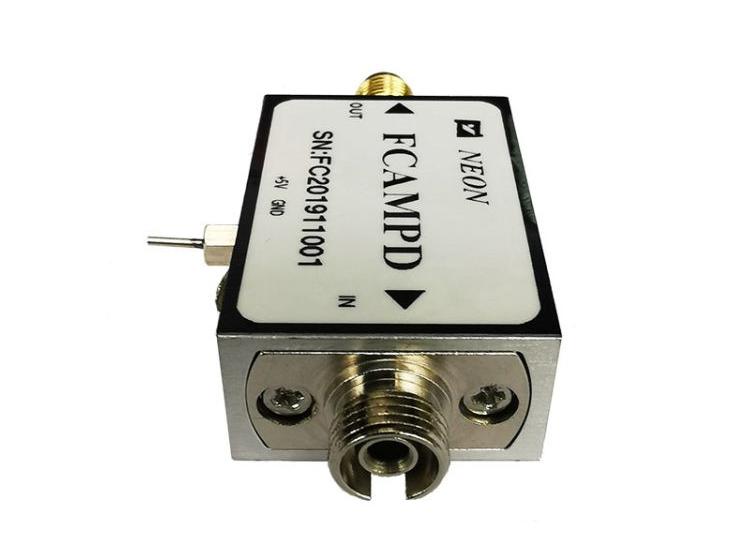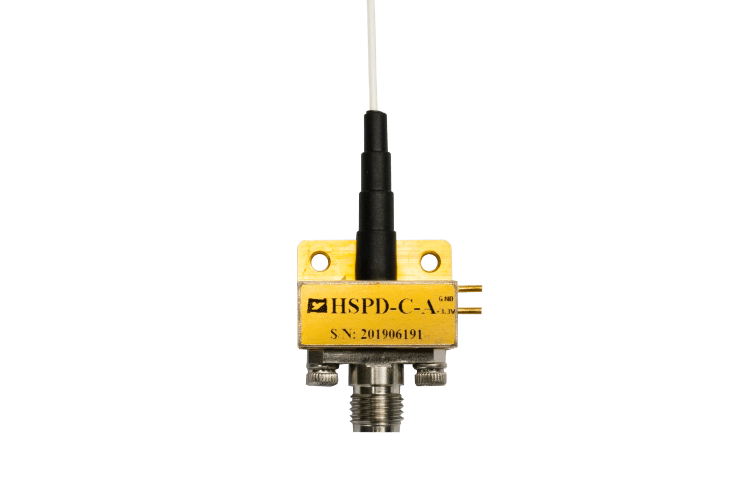Innovative Uses of InGaAs Photodetectors and AOM Combination
InGaAs photodetectors have become indispensable in a range of modern technological applications, offering high sensitivity, a broad spectral range, and fast response times. Their role is especially prominent in fields such as optical communication, laser systems, and imaging technologies. When paired with acousto-optic modulators (AOM), their capabilities are significantly enhanced, paving the way for groundbreaking innovations. This article explores the application scenarios and advantages of combining AOM and photodetectors (PD), illustrating their synergistic potential.

Applications and Advantages of Combining AOM and InGaAs Photodetectors
1. Optical Communication Systems
Optical communication systems represent a cornerstone of modern connectivity, particularly for long-distance and high-bandwidth data transfer. The combination of AOM and InGaAs photodetectors excels in these systems, especially in Analog Photonic Links (APL) designed for RF signal transmission.
Advantages
Enhanced Linearity and Dynamic Range
Using an AOM in combination with Optical Phase-Locked Loops (OPLL) enables Linear Coherent Phase Demodulation (LCPD). This advanced method addresses the inherent nonlinearities of traditional intensity modulation-direct detection (IM-DD) systems, as well as phase modulation-coherent detection (PM-CD) systems. The result is improved system linearity and a significant boost to the spurious-free dynamic range (SFDR).
Environmental Robustness
Environmental disturbances, such as vibrations or temperature fluctuations, can induce phase errors in optical communication systems. The AOM, controlled by a Voltage-Controlled Oscillator (VCO), compensates for these errors in real time. This capability ensures stable and high-linearity coherent reception, even under challenging conditions, facilitating reliable long-distance data transmission.
2. Laser Frequency Stabilization
Frequency stability is a critical requirement for laser systems used in atomic physics, precision metrology, and spectroscopy. AOMs, when integrated with InGaAs photodetectors, provide remarkable advantages in achieving and maintaining laser frequency stabilization.
Advantages
Long-Term and Short-Term Stability
A hybrid approach combining Modulation Transfer Spectroscopy (MTS) and Frequency Modulation Spectroscopy (FMS) offers a robust solution. This method leverages the DC-coupled MTS signal for long-term stability and the AC-coupled FMS signal for high signal-to-noise ratio (SNR). The result is precise and stable laser frequency performance over both short and extended periods.
Laser Intensity Stability
By implementing intensity stabilization techniques, the system minimizes frequency drift over time. Experimental data have shown that this approach can achieve a frequency drift standard deviation of just 7.8 kHz over 10 hours, with an Allan deviation of 1.9 kHz at a 2-second integration time. Such stability is crucial for experiments requiring exceptional precision, such as quantum optics and fundamental physics research.

3. Biomedical Imaging
The combination of AOM and InGaAs photodetectors has also proven transformative in biomedical imaging, particularly in photoacoustic imaging (PAI). This non-invasive imaging technique enables the quantitative measurement of tissue absorption coefficients, crucial for medical diagnostics and research.
Advantages
Non-Invasive Precision
By integrating AOM-based modulation with InGaAs photodetectors, researchers can accurately estimate local tissue absorption coefficients without prior knowledge of the medium’s optical properties. Monte Carlo simulations have validated that this method achieves a maximum deviation of only 10% within the expected range, making it suitable for in vivo applications.
High-Accuracy Absorption Measurement
This combination facilitates precise quantification of dye concentrations and optical absorption levels. Such capabilities are invaluable for analyzing natural chromophores like hemoglobin and for monitoring clinical treatments. The high precision provided by this technology supports advanced diagnostic techniques and therapeutic interventions.
4. Photodetector Response Bandwidth Measurement
Accurately measuring the response bandwidth of InGaAs photodetectors is critical for optimizing their performance in various applications. The AOM and photodetector combination offers an efficient and reliable method for this task.
Advantages
Experimental Accuracy
Using AOM to modulate light signals enables precise measurement of photodetector bandwidth. Experimental results demonstrate close agreement between measured response bandwidths and theoretical calculations, underscoring the method’s validity and practicality.
Low-Frequency Applications
This approach is particularly effective for measuring low-frequency response bandwidths below 10 kHz, where traditional methods may struggle. This capability expands the utility of photodetectors in specialized applications requiring low-frequency operation.

5. High-Efficiency Broadband Acousto-Optic Modulation
In advanced optical systems, high-efficiency and broadband modulation are often required. Push-pull AOM designs, when combined with InGaAs photodetectors, deliver exceptional performance in these scenarios.
Advantages
High Bandwidth and Modulation Efficiency
The use of focused interdigitated transducers and unequally spaced double-electrode transducers allows for high-bandwidth and high-efficiency modulation. These innovative designs eliminate issues like electrode reflection, improving system bandwidth and operational efficiency.
Innovative Waveguide Structures
Waveguides made of lithium niobate integrated with chalcogenide glass significantly enhance the refractive index change, thereby increasing modulation efficiency. Such advances pave the way for more compact, efficient, and high-performing optical devices.
6. Magneto-Optic Effects
Magneto-optic effects enable the generation and detection of circularly polarized light, a feature critical for various scientific and technological applications. Combining AOM with InGaAs photodetectors enhances these capabilities.
Advantages
Reconfigurable Polarization States
By manipulating the direction of the longitudinal magnetic field, the system can dynamically switch between left-handed circular polarization (LCP) and right-handed circular polarization (RCP). This reconfigurability is crucial for systems requiring adaptable polarization control.
Efficient Polarization and Detection
Using Zeeman-level transitions, the system achieves efficient generation and detection of circularly polarized light under specific RF magnetic field conditions. This capability supports applications in RF signal reception and polarization-sensitive imaging.
7. Parameter Measurement
The AOM and InGaAs photodetector combination is also invaluable for measuring critical system parameters, including photodetector inertia and laser beam properties.
Advantages
Mathematical Modeling and Validation
By analyzing the response of an acousto-optic processor (AOP) to rectangular pulse inputs, researchers can extract detailed information about AOM, laser, and photodetector characteristics. This method also allows for the independent estimation of optical beam traversal times through elastic wave packets and photodetector inertia.
Enhanced Beam Profiling
Short-pulse inputs facilitate precise profiling of laser beam cross-sections and power flux density distributions. Experimental verification confirms the theoretical predictions, providing a reliable means of optimizing laser configurations

Wrap Up
The integration of InGaAs photodetectors with acousto-optic modulators presents a versatile and high-performance solution across various domains. From improving the robustness and fidelity of optical communication systems to achieving unparalleled precision in laser frequency stabilization and biomedical imaging, this combination continues to push the boundaries of photonic technology. Moreover, its application in bandwidth measurement, magneto-optic effects, and parameter analysis underscores its versatility.
As the demand for higher precision and reliability grows, the synergistic use of AOMs and photodetectors promises to play a pivotal role in future technological advancements, offering transformative potential across industries.








